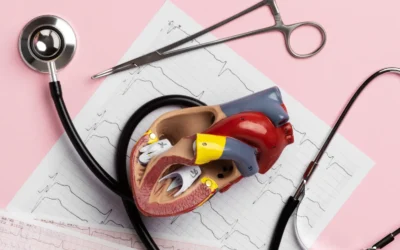What is Ultrasound?
Definition: Ultrasound is a medical imaging technique that uses high-frequency sound waves to produce images of structures within the body.
How It Works: During an ultrasound examination, a transducer sends sound waves into the body. These waves bounce off internal structures and return to the transducer, which then converts the echoes into visual images. This process allows healthcare providers to view organs, tissues, and other internal structures in real-time.
The process begins with the application of a gel on the skin, which helps the sound waves travel better by eliminating air pockets between the transducer and the skin. The transducer is then moved over the area being examined, capturing images from various angles. These images are displayed on a monitor, allowing the technician and healthcare provider to observe the internal structures and identify any abnormalities immediately.
Uses: Ultrasound is widely used to examine various organs, including the heart, liver, kidneys, and blood vessels. It is particularly useful for assessing the size, shape, and consistency of tissues and for detecting abnormalities such as tumors, cysts, and organ enlargements. Additionally, ultrasound is essential in obstetrics for monitoring fetal development, assessing placental position, and determining the baby’s gender.
In cardiology, ultrasound, known as an echocardiogram, evaluates the heart’s structure and function. It can detect issues like heart valve problems, heart muscle weakness, and fluid around the heart. In emergency medicine, ultrasound helps in quickly diagnosing conditions like internal bleeding, gallstones, and blood clots.
Advantages:
- Non-Invasive and Painless: Ultrasound does not require incisions or injections, making it a comfortable procedure for patients. This non-invasive nature makes it an ideal first-line diagnostic tool.
- Safe for All Ages: Since it does not use ionizing radiation, ultrasound is safe for pregnant women and children. Unlike X-rays or CT scans, ultrasound does not carry the risk of radiation exposure, making it a preferred choice for repeated examinations.
- Real-Time Imaging: Ultrasound provides real-time images, which is invaluable for guiding procedures like biopsies and for monitoring fetal development during pregnancy. Real-time imaging also allows for dynamic assessments, such as observing blood flow or organ movement.
Understanding Blood Tests
Definition: Blood tests involve the laboratory analysis of a blood sample to check for various markers, cells, and substances.
How It Works: A blood sample is drawn from a vein, usually in the arm, and analyzed to measure levels of different substances, such as glucose, hormones, electrolytes, and enzymes. Blood tests also involve counting different types of cells, including red blood cells, white blood cells, and platelets.
The process starts with the collection of the blood sample using a needle and syringe. The sample is then processed in a laboratory where different tests are performed to measure specific components. For example, a complete blood count (CBC) measures the number of different cells, while a comprehensive metabolic panel (CMP) evaluates kidney and liver function, electrolyte balance, and blood sugar levels.
Uses: Blood tests are crucial for detecting infections, anemia, diabetes, heart disease, and for evaluating liver and kidney function. They are also used to identify certain cancers through tumor markers. Routine blood tests can reveal significant insights into a patient’s overall health and help diagnose a wide range of conditions.
In infectious diseases, blood tests can detect the presence of bacteria, viruses, and other pathogens. For metabolic conditions like diabetes, blood tests measure glucose and insulin levels, aiding in diagnosis and management. In oncology, blood tests can identify tumor markers that indicate the presence of certain cancers, such as prostate-specific antigen (PSA) for prostate cancer or CA-125 for ovarian cancer.
Advantages:
- Comprehensive Information: Blood tests can detect a wide range of metabolic and systemic conditions. They provide a snapshot of the body’s internal environment, helping diagnose and monitor diseases.
- Organ Function Assessment: They provide detailed information about the functioning of various organs and systems. Blood tests can reveal abnormalities in liver enzymes, kidney function, and electrolyte balance, guiding treatment decisions.
- Monitoring: Blood tests are essential for monitoring chronic conditions and assessing the effectiveness of treatments. Regular blood tests help track disease progression, response to therapy, and potential side effects of medications.
Why Tumors Might Be Discovered on Ultrasound After Normal Blood Tests
Different Detection Mechanisms
Blood Tests: Blood tests measure levels of substances in the blood that can indicate disease. However, some tumors do not release detectable markers into the bloodstream, or the markers are not yet at a detectable level.
Ultrasound: Ultrasound provides a visual image of the internal structure of organs, which can reveal physical abnormalities like masses or tumors that may not affect blood chemistry or cell counts. The ability to visualize structures directly allows ultrasound to detect abnormalities that are not yet reflected in blood test results.
Tumor Biology
Non-Secretory Tumors: Some tumors do not secrete substances into the bloodstream, making them undetectable by blood tests. These tumors may grow silently without affecting blood markers until they become large enough to cause symptoms or be detected by imaging.
Early-Stage Tumors: Tumors in early stages might not produce significant changes in blood marker levels, remaining undetected until they grow large enough to be seen on imaging studies like ultrasound. Early detection through imaging can lead to timely interventions, improving prognosis and treatment outcomes.
Tumor Heterogeneity: Tumors can vary significantly in their biological behavior. Some may release detectable markers, while others do not. This heterogeneity means that relying solely on blood tests might miss certain types of tumors, underscoring the importance of combining diagnostic methods.
Location and Type of Tumor
Hidden Tumors: Tumors located in regions where blood markers are not specific or sensitive enough to detect them can go unnoticed in blood tests. For example, tumors deep within the abdomen or pelvis might not cause detectable changes in blood markers until they are advanced.
Solid Tumors vs. Hematologic Tumors: Blood tests are more effective for detecting blood-related cancers (like leukemia) but less so for solid tumors that can be more readily seen with imaging. Hematologic cancers often alter blood cell counts and markers, making them detectable through blood tests, while solid tumors require imaging for visualization.
Imaging Limitations: While ultrasound is a powerful tool, it also has limitations. It might not be able to visualize certain areas clearly due to the presence of bone or air, such as in the lungs or gastrointestinal tract. In such cases, other imaging modalities like CT or MRI may be necessary.
Diagnostic Specificity
Blood Markers: Specific markers might be required for different types of cancers, and not all cancers have a specific blood marker. The absence of a universal marker means that blood tests might miss cancers without a corresponding marker.
Imaging Sensitivity: Ultrasound can detect physical changes in tissues, such as changes in organ size, the presence of masses, or abnormal tissue structures, providing a different layer of diagnostic information. This sensitivity to structural changes complements the biochemical information provided by blood tests.
Complementary Diagnostics: Combining blood tests and ultrasound enhances diagnostic accuracy. Blood tests offer biochemical insights, while ultrasound provides structural information. Together, they offer a comprehensive view of the patient’s health, improving the chances of early and accurate diagnosis.
Conclusion
In summary, while blood tests are valuable for detecting many conditions and providing a general overview of health, ultrasounds offer a direct look at the physical structure of organs. They can identify tumors that do not yet affect blood markers. Combining both methods provides a more comprehensive diagnostic approach, ensuring that abnormalities are detected as early as possible, leading to better outcomes for patients.
The integration of both diagnostic tools in routine medical practice enhances the ability to detect and monitor diseases effectively. Early detection is crucial in the management of many conditions, particularly cancers, where treatment outcomes are significantly better when the disease is identified at an early stage. Therefore, leveraging the strengths of both blood tests and ultrasound ensures a holistic approach to patient care and improved health outcomes.





0 Comments